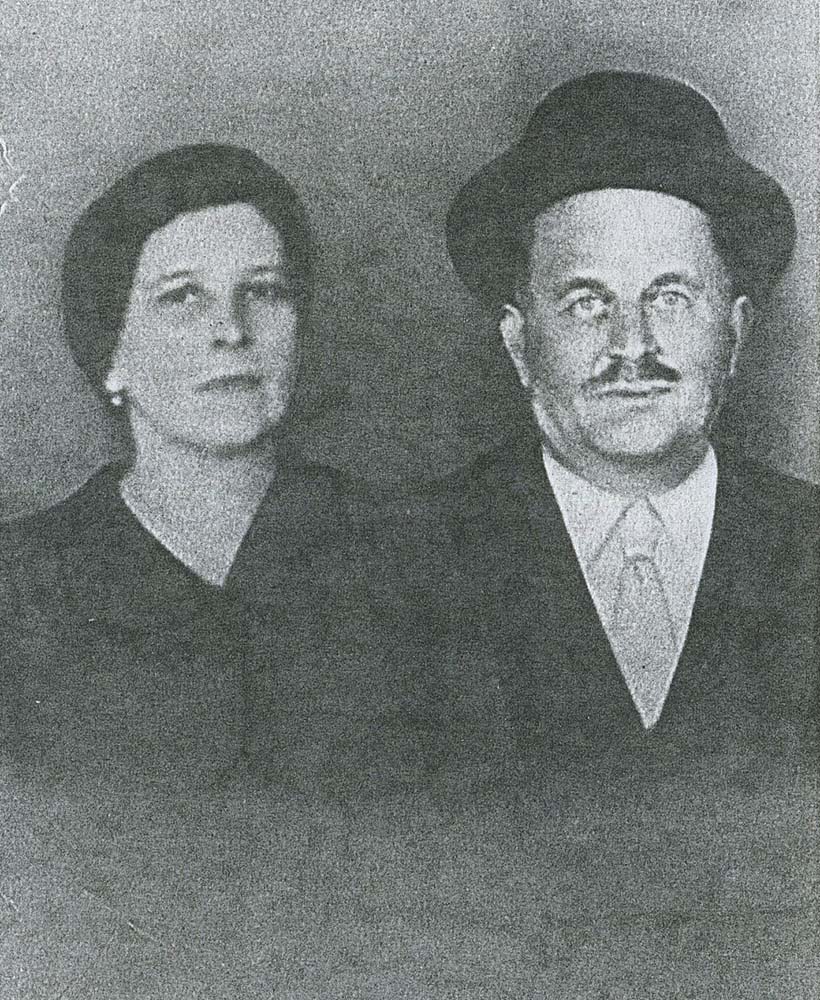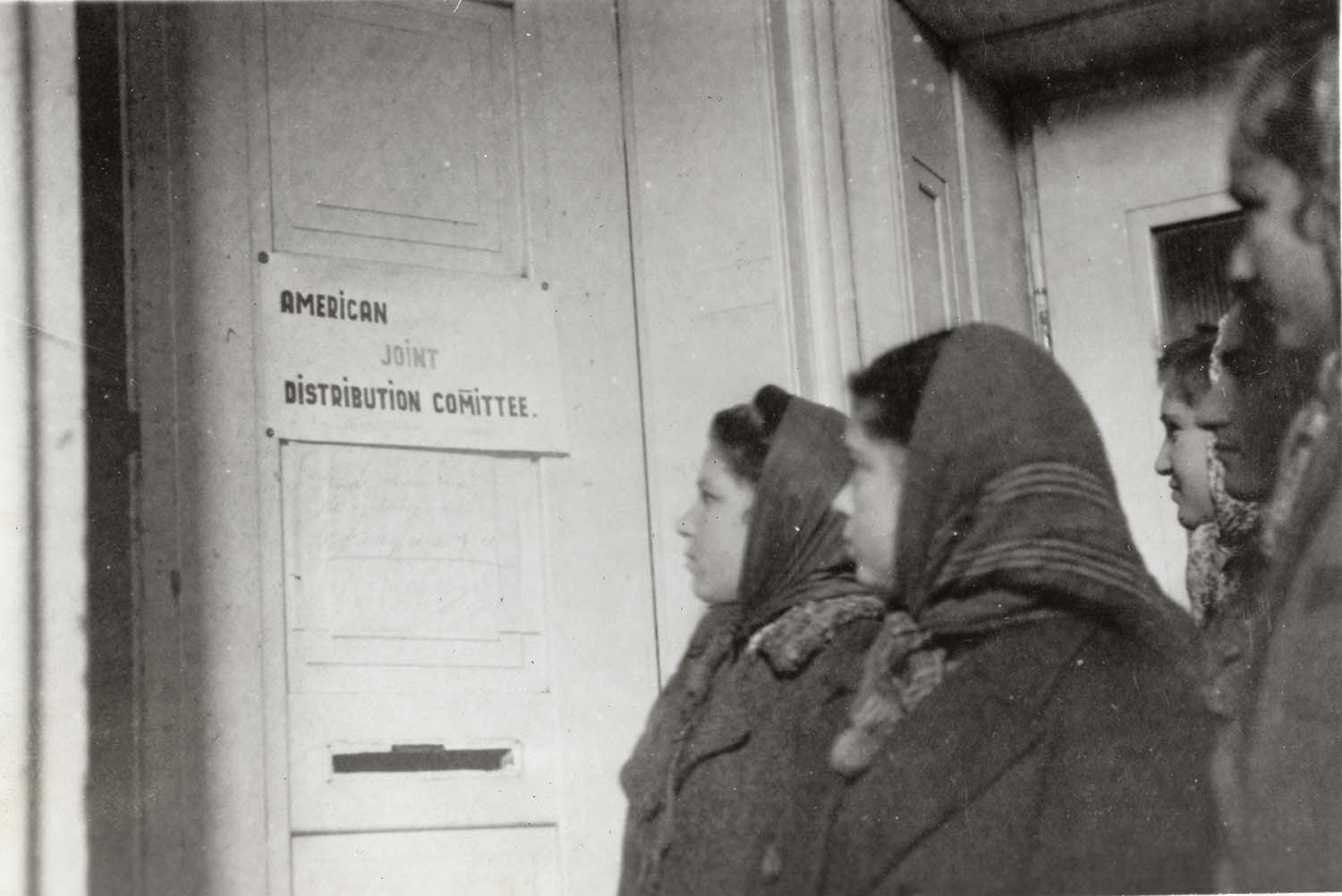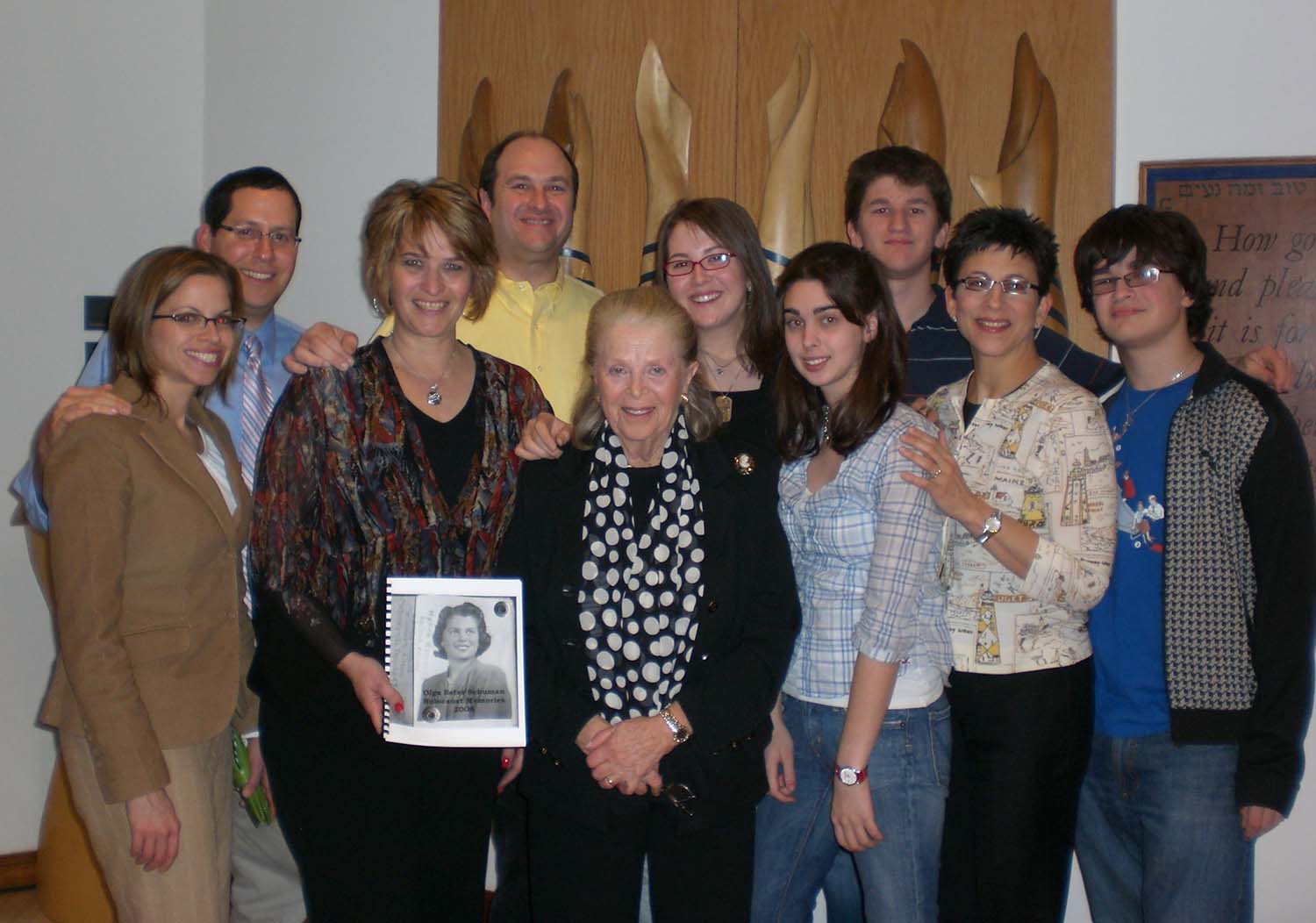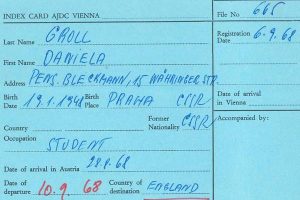
A Rare Romanian Artifact in the Archives
The story behind Olga Schuman’s emigration card
Recently, Dr. Rick Hodes connected Linda Levi, JDC’s Director of Global Archives, with Joel Schuman who had an artifact left by his mother that was related to JDC. Schuman sent JDC a scan of an emigration service card, very different from others found in the JDC Archives’ Names Index. To start, the card was from Romania and the JDC Archives does not have any emigration cards originating from that country. From reading the card we know that it belonged to a woman named Olga Kopolovicova. But how did this rare card end up at the JDC Archives and how was it connected to JDC?
We can chalk that up to coincidence. Dr. Joel Schuman, Olga’s son, recently attended the Alpha Omega Alpha (the Honor Medical Society) ceremony at the University of Michigan, where his son was being inducted. The speaker at the ceremony happened to be none other than Dr. Rick Hodes, JDC’s Medical Director in Ethiopia. Dr. Schuman introduced himself to Dr. Hodes for one reason, thinking he was a relative of a prior mentor, but came away making a chance JDC connection instead. When Dr. Schuman noted that his mother was assisted by JDC, Dr. Hodes alerted Ms. Levi, and another connection was made.
But what was Olga Schuman’s story? How did she come to receive the card?
To find out, we must go back to Drahovo, Czechoslovakia (now in Ukraine), where Olga (Ester) Schuman (nee Kopolovicova) was born in 1928, one of eight children to Nathan and Ida Kopolovic.
In 1944, around Passover time, she and her remaining family in Drahovo were told to get up early in the morning and go to the synagogue where they had to wait for some time. Eventually this group was moved to a school in the ghetto where they remained for a long period with no food. Not long before the deportation, two of Olga’s sisters managed to escape. One of her brothers went into the Czech underground.
From there, Olga and her family were deported to Auschwitz. Olga recalled helping her sister and two children get off the train. A Nazi officer saw them and asked if the children were hers. She said no, was pulled away from them, and it was the last time she ever saw her sister.
Olga remained in Auschwitz for about two months. In June 1944 she was part of the first group of Jewish prisoners to be transferred from Auschwitz to Stutthof concentration camp in Poland. There she endured months of forced labor until liberation. As the Nazis realized that the Soviets were advancing on them, they began evacuating Stutthof and had prisoners embark on a forced death march. Their group was marching for days, stopping occasionally on the way. One day they were abandoned in a barn in Poland and, eventually, they were liberated by the Soviets in January 1945.
By this point, the march and many months of hardship that Olga endured had taken their toll. After liberation she contracted typhus and pneumonia, ending up in a sanitorium where she soon recovered. Olga’s son, Joel, does not know how, but his mother eventually ended up in Romania. In June 1945 she was issued an emigration department card in Bucharest by the Federation of Jewish Communities in Romania’s Social Assistance Department, with a stamp endorsed by JDC authorizing passage from Romania to Palestine. At the time, JDC was supporting FEDROM’s social assistance activities and was also funding illegal immigration to Palestine (Bricha).
Olga, however, never used this card to go to Palestine. Instead, she returned to Czechoslovakia to see if she could find and reconnect with any family that might remain there. It turned out that of all her family deported to Auschwitz, she was the sole survivor. Two of her sisters, Helen and Edith, who had escaped prior to deportation, had done so on false papers and managed to survive the remainder of the war as Christians/non-Jews in Budapest. Her brother Irving, who had escaped into the Czech underground, also survived. The three siblings were all living in Budapest, where Olga reunited with them.
From Budapest, Olga and her siblings moved back to Czechoslovakia. While there, her brother taught her to be a furrier/tailor until they got sponsorship to move to the United States from her father’s relatives in New York. On November 22, 1946, Olga, her sisters, and her brother and sister-in-law left for the United States on the S.S. Gripsholm, which sailed from Gothenburg, Sweden, to New York City. She stayed with her aunt and uncle there for about four months. In 1948 she met her husband, Walter, and married six weeks later. They had four children and 10 grandchildren, 12 of whom joined them when they returned to Auschwitz in 2001 to remember those they lost.
Olga’s emigration card from Romania might have represented a small part of Olga’s story, but it’s a rare item that reflects another piece of JDC’s operations in a time when people needed them the most.
Dr. Joel Schuman is the Director of NYU Langone Eye Center and Professor and Chair of Ophthalmology. His sister, Beth Rosenman, MSed, is Assistant Principal at Denton Avenue School on Long Island. This story was shared with their permission.







